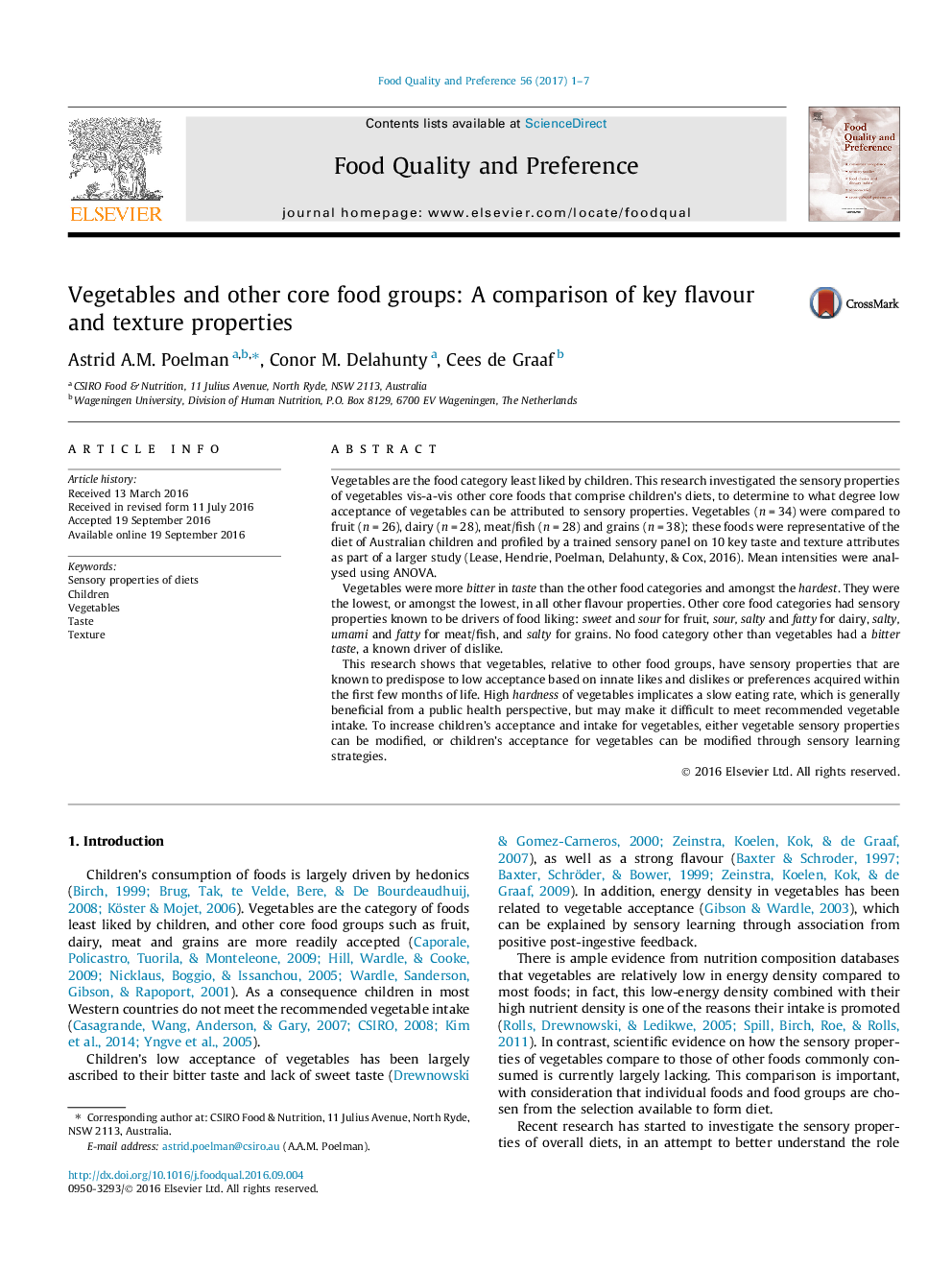| کد مقاله | کد نشریه | سال انتشار | مقاله انگلیسی | نسخه تمام متن |
|---|---|---|---|---|
| 4316822 | 1411890 | 2017 | 7 صفحه PDF | دانلود رایگان |
• Vegetables were compared to fruits, dairy, meat/fish and grains on sensory properties.
• Vegetables lacked drivers of liking (sweet, sour, salty, umami, fatty).
• Other food groups had one or more drivers of liking.
• Vegetables possessed a driver of dislike (bitter taste) absent in the other groups.
• Vegetables were characterised by a hard and moist texture.
Vegetables are the food category least liked by children. This research investigated the sensory properties of vegetables vis-a-vis other core foods that comprise children’s diets, to determine to what degree low acceptance of vegetables can be attributed to sensory properties. Vegetables (n = 34) were compared to fruit (n = 26), dairy (n = 28), meat/fish (n = 28) and grains (n = 38); these foods were representative of the diet of Australian children and profiled by a trained sensory panel on 10 key taste and texture attributes as part of a larger study (Lease, Hendrie, Poelman, Delahunty, & Cox, 2016). Mean intensities were analysed using ANOVA.Vegetables were more bitter in taste than the other food categories and amongst the hardest. They were the lowest, or amongst the lowest, in all other flavour properties. Other core food categories had sensory properties known to be drivers of food liking: sweet and sour for fruit, sour, salty and fatty for dairy, salty, umami and fatty for meat/fish, and salty for grains. No food category other than vegetables had a bitter taste, a known driver of dislike.This research shows that vegetables, relative to other food groups, have sensory properties that are known to predispose to low acceptance based on innate likes and dislikes or preferences acquired within the first few months of life. High hardness of vegetables implicates a slow eating rate, which is generally beneficial from a public health perspective, but may make it difficult to meet recommended vegetable intake. To increase children’s acceptance and intake for vegetables, either vegetable sensory properties can be modified, or children’s acceptance for vegetables can be modified through sensory learning strategies.
Journal: Food Quality and Preference - Volume 56, Part A, March 2017, Pages 1–7
